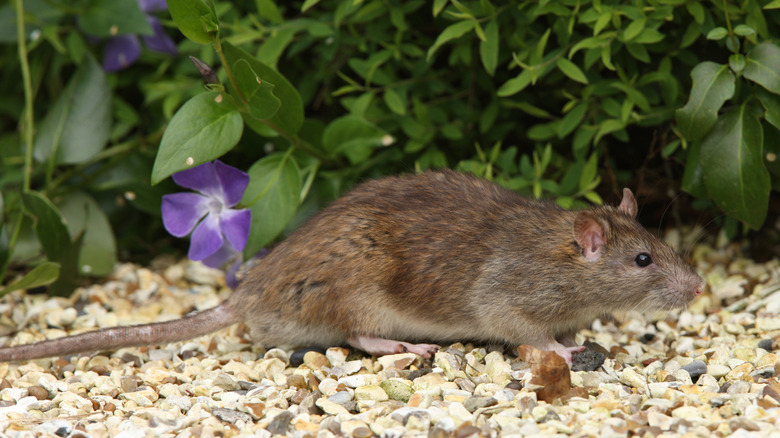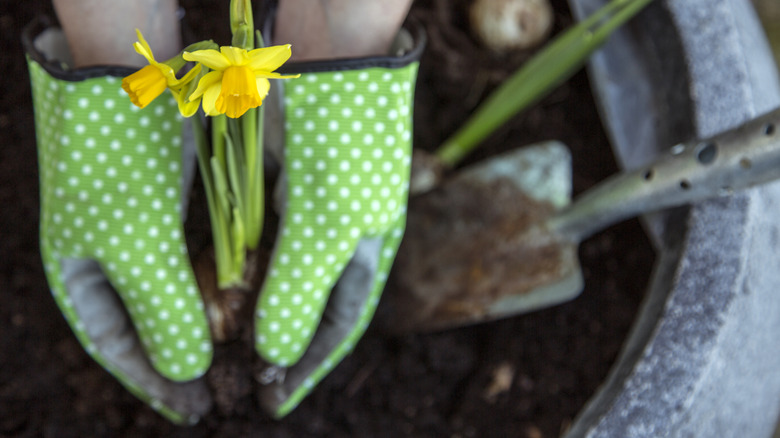This Pretty Yellow Flower Is A Natural Rat Repellent & You Never Even Realized
The garden is a place of serenity, of inspiration, and delight, especially when you see the fruits of your labor. So when you're kneeling among your raised beds, the last thing you want to see in your peripheral vision is something scurrying by. Maybe you imagined it, but as you pay closer attention, you can't ignore the signs: bite marks on your lettuce, tiny droppings along the pathways, and well-worn grooves through the soil. Rats can wreak havoc on your crops, but even worse, they also carry diseases. You don't want them anywhere near fruits and vegetables that you'll be eating.
For a humane and nonconfrontational way to repel rats, try planting daffodils, one of the flowers that will keep rodents away. In fact, daffodils and other members of the Narcissus family — jonquils, narcissus, paperwhites — store a toxic alkaloid called lycorine in their bulb, as well as in the leaves and stems. Rodents and deer instinctively avoid daffodils because the flower can cause them significant physical trauma when eaten, including severe twitching, paralysis, and possibly death. Even simply picking them can cause skin irritation, and according to Poison Control, this may go for humans as well.
Best practices when planting daffodils to repel rats
Using daffodils as a natural rat repellent will involve a bit of forethought, though. September and October are the best months to plant spring bulbs like daffodils, which gives them a chance to settle in before freezing temperatures arrive. Early fall also is a good time to transplant daffodil bulbs. Cooler temperatures signal to the bulbs that it's time to emerge from their summer dormancy.
Daffodils love sun, so plant the bulbs either out in the open or under a deciduous tree that will still provide sufficient sunlight as their leaves grow in during the spring. Daffodil bulbs do multiply and can crowd their space, so keep that in mind when you are finding a spot for them. Amend clay soil with compost or peat moss for better aeration and drainage, as daffodils prefer well-drained conditions. Plant the bulbs about 6 to 8 inches deep, with the pointed tip facing up.
As the bulbs are getting established, they'll need plenty of water to stimulate root growth. Water them frequently from the time you put them into the ground until their blooms have passed. If your area gets regular rainfall during the fall and winter, then you can let Mother Nature do the work for you. If not, make sure you keep the soil moist for the bulbs. Whether or not you have rodent visitors in the spring, you'll at least be ready to repel them with daffodils — and will have beautiful blooms to enjoy as well.

